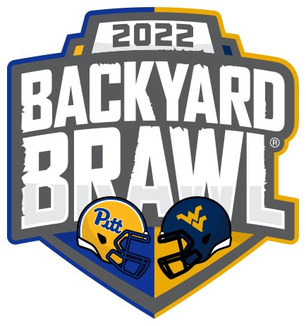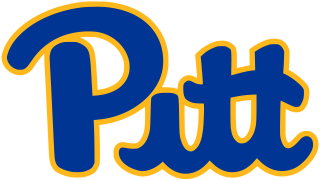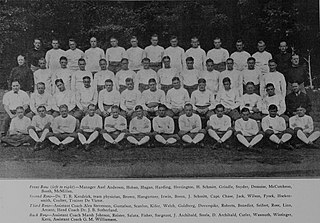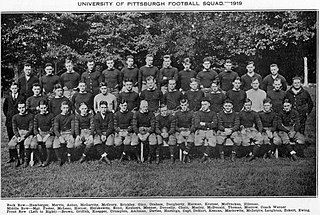
Acrisure Stadium, formerly known as Heinz Field, is a football stadium located in the North Shore neighborhood of Pittsburgh, Pennsylvania, United States. It primarily serves as the home of the Pittsburgh Steelers of the National Football League (NFL) and the Pittsburgh Panthers of the NCAA Division I Football Bowl Subdivision in the Atlantic Coast Conference (ACC). The stadium opened in 2001 as Heinz Field, following the controlled implosion of the teams' previous home, Three Rivers Stadium. In 2021, the H. J. Heinz Company declined to renew the stadium's naming rights. The City of Pittsburgh green-lit Acrisure's bid to purchase the rights in 2022.

Forbes Field was a baseball park in the Oakland neighborhood of Pittsburgh, Pennsylvania, from 1909 to June 28, 1970. It was the third home of the Pittsburgh Pirates, the city's Major League Baseball (MLB) team, and the first home of the Pittsburgh Steelers, the city's National Football League (NFL) franchise. From 1909 to 1924, the stadium also served as the home football field for the University of Pittsburgh "Pitt" Panthers. The stadium sat on Forbes Avenue, named for British general John Forbes, who fought in the French and Indian War and named the city in 1758.

Three Rivers Stadium was a multi-purpose stadium in Pittsburgh, Pennsylvania, United States, from 1970 to 2000. It was home to the Pittsburgh Pirates of Major League Baseball (MLB) and the Pittsburgh Steelers of the National Football League (NFL).

The Petersen Events Center is a 12,508-seat multi-purpose arena on the campus of the University of Pittsburgh in the Oakland neighborhood. The arena is named for philanthropists John Petersen and his wife Gertrude, who donated $10 million for its construction. John Petersen, a Pitt alumnus, is a native of nearby Erie and is the retired president and CEO of Erie Insurance Group. The Petersen Events Center was winner of the 2003 Innovative Architecture & Design Honor Award from Recreation Management magazine.

The Backyard Brawl is an American college football rivalry between the University of Pittsburgh Panthers and the West Virginia University Mountaineers. The term "Backyard Brawl" has also been used to refer to college basketball games played annually or semi-annually and may also be used to refer to other athletic competitions between the two schools. It is a registered trademark for both universities, and refers to the close proximity of the two universities, separated by 75 miles (105 km) along Interstate 79.

The Pittsburgh Panthers, commonly also referred to as the Pitt Panthers, are the athletic teams representing the University of Pittsburgh, although the term is colloquially used to refer to other aspects of the university such as alumni, faculty, and students. Pitt fields 19 university-sponsored varsity teams at the highest level of competitive collegiate athletics in the United States: the NCAA Division I Football Bowl Subdivision (FBS) for American football.

Sports in Pittsburgh have been played dating back to the American Civil War. Baseball, hockey, and the first professional American football game had been played in the city by 1892. Pittsburgh was first known as the "City of Champions" when the Pittsburgh Pirates, Pittsburgh Panthers football team, and Pittsburgh Steelers won multiple championships in the 1970s. Today, the city has three major professional sports franchises, the Pirates, Steelers, and Penguins; while the University of Pittsburgh Panthers compete in a Division I Power Five conference, the highest level of collegiate athletics in the United States, in both football and basketball. Local universities Duquesne and Robert Morris also field Division I teams in men's and women's basketball and Division I FCS teams in football. Robert Morris also fields Division I men's and women's ice hockey teams.

The Pittsburgh Panthers football program is the intercollegiate football team of the University of Pittsburgh, often referred to as "Pitt", in Pittsburgh, Pennsylvania. Traditionally the most popular sport at the university, Pitt football has played at the highest level of American college football competition, now termed the NCAA Division I Football Bowl Subdivision, since the beginning of the school's official sponsorship of the sport in 1890. Pitt competes as a member of the Atlantic Coast Conference (ACC).

The Pittsburgh Panthers men's basketball team is the NCAA Division I intercollegiate men's basketball program of the University of Pittsburgh, often referred to as "Pitt", located in Pittsburgh, Pennsylvania. The Pitt men's basketball team competes in the Atlantic Coast Conference (ACC) and plays their home games in the Petersen Events Center. The Panthers were retroactively recognized as the pre-NCAA tournament national champion twice by the Helms Athletic Foundation and once by the Premo-Porretta Power Poll. Pitt has reached one Final Four, received 15 First Team All-American selections, appeared in 27 NCAA tournaments through the 2022–23 season, and has recorded 1,674 victories against 1,232 losses since their inaugural season of 1905–06.

The Oakland Zoo is the student cheering section for the University of Pittsburgh men's and women's basketball teams. The Zoo cheers on the Panthers from the bottom tier of the stands at the Petersen Events Center, primarily across from the teams' benches and on the baselines under the baskets. The "Pete" holds a rowdy crowd of 1,500 students that are typically uniformly clad in gold t-shirts, and the Zoo student section is consistently sold out for Panthers home games. The Oakland Zoo is named after Oakland, the neighborhood in which the university is located. The name "Oakland Zoo" is used for the basketball cheering sections only; the football cheering section has often used the title, "The Panther Pitt."

The Charles L. Cost Sports Center is a multi-purpose indoor sports complex at the University of Pittsburgh and located at its upper campus area above and behind the Petersen Events Center in Pittsburgh, Pennsylvania. The Cost Sports Center sits on top of the seven-story University's Tower View Parking garage directly above Pitt's Trees Field, the university's former baseball and softball facilities as well as the school's intramural fields. The fields, planned to be converted into a new track and field complex, can be reached via elevator from within the Cost Sports Center.

The City Game is an annual college basketball game between the University of Pittsburgh Panthers and the Duquesne University Dukes. The term "City Game" is also used refer to women's basketball games played annually between the two universities and may also be used to refer to other athletic competitions between the two schools.
Steve Pederson was athletic director (AD) at the University of Nebraska-Lincoln and the University of Pittsburgh. He began his career as a college football recruiting coordinator at Ohio State, Tennessee, and Nebraska, where he assembled No. 1 ranked recruiting classes. He has worked with five College Football Hall of Fame football coaches.

The Petersen Sports Complex (PSC) is a 12.32-acre (4.99 ha) multi-sport athletic facility on the campus of the University of Pittsburgh in Pittsburgh, Pennsylvania. It houses Charles L. Cost Field, Vartabedian Field, and Ambrose Urbanic Field, the respective home practice and competition venues of the university's NCAA Division I varsity athletic baseball, softball, and men's and women's soccer teams. Known as the Pittsburgh (Pitt) Panthers, these teams compete in the Atlantic Coast Conference. The complex is located adjacent to the school's Trees Hall and Cost Sports Center near the remainder of the university's other upper campus athletic facilities.
American football in Western Pennsylvania, featuring the city of Pittsburgh and surrounding areas, has had a long and storied history, dating back to the early days of the sport. All levels of football, including high school football and college football, are followed passionately, and the area's National Football League (NFL) team, the Pittsburgh Steelers, is consistently one of the sport's most popular teams. Many of the NFL's top stars have come from the region as well, especially those that play quarterback, earning Western Pennsylvania the nickname "Cradle of Quarterbacks".

Pittsburgh Panthers men's soccer is the NCAA Division I intercollegiate men's soccer team of the University of Pittsburgh, often referred to as "Pitt", located in Pittsburgh, Pennsylvania. The Pitt men's soccer competes in the Atlantic Coast Conference (ACC) and plays their home games at Ambrose Urbanic Field in the university's Petersen Sports Complex. Pitt soccer players have had eight selections as All-Americans and multiple former Panthers have gone on to play professionally. The Panthers have appeared in seven NCAA tournaments and have reached the College Cup twice. The Panthers have been coached by Jay Vidovich since 2015.

The 1918 Pittsburgh Panthers football team represented the University of Pittsburgh in the 1918 college football season. In a season cut short by the Spanish flu pandemic, coach Pop Warner led the Panthers in a schedule played all in one month, including a convincing victory in a highly publicized game over defending national champion and unscored-upon Georgia Tech. A highly controversial loss ended the season and snapped a 32-game Pitt winning streak, but the Panthers outscored opponents 140–16 in that short season and were retroactively selected as the national champion by the Helms Athletic Foundation and Houlgate System and as a co-national champion with Michigan by the National Championship Foundation.

The 1925 Pittsburgh Panthers football team was an American football team that represented the University of Pittsburgh as an independent during the 1925 college football season. In its second season under head coach Jock Sutherland, the team compiled an 8–1 record and outscored opponents by a total of 151 to 34. The team was ranked No. 10 in the nation in the Dickinson System ratings released in January 1926. This was the Panthers' first season at Pitt Stadium, and the team played eight of its nine games there.

The 1919 Pittsburgh Panthers football team was an American football team that represented the University of Pittsburgh as an independent during the 1919 college football season. In its fifth season under head coach Pop Warner, the team compiled a 6–2–1 record and outscored all opponents by a total of 119 to 66. The team played its home games at Forbes Field in Pittsburgh.

The 1924 Pittsburgh Panthers football team was an American football team that represented the University of Pittsburgh as an independent during the 1924 college football season. In its first season under head coach Jock Sutherland, the team compiled a 5–3–1 record and outscored opponents by a total of 98 to 43. The team played its home games at Forbes Field in Pittsburgh.


















